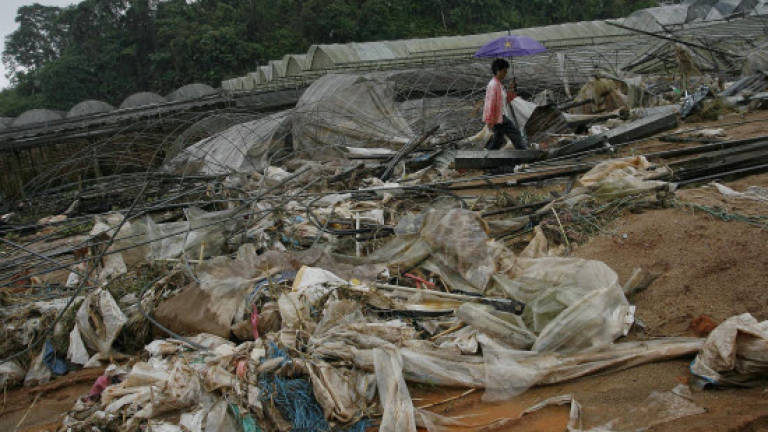Waves of destruction

PETALING JAYA (Jan 1, 2014): Malaysia, by many accounts, is free from serious natural disasters as compared to most other countries. From earthquakes to volcano eruptions to typhoons, we are free from these devastating powers of nature.
When was the last terrifying disaster that struck our shores?
One that we would always remember is the 2004 tsunami that hit major parts of Asia.
Although we were among the least affected countries, it did not spare us the tragic loss of lives and destruction of property.
It scarred Penang Island, and until today survivors still recall scrambling over walls – something they never imagined physically possible – to save themselves from the sea-surge.
The word "tsunami" had never gained such notoriety in the Malaysian vocabulary until then because we had only ever heard of such natural occurrences in Japan.
Not much has happened since then, except for the occasional minor tremors we feel off and on from quakes in neighbouring Indonesia.
Closer to the capital, people still vividly remember the flash floods that happened in areas that had never experienced floods, like Puchong, where shoppers were seen sipping Starbucks beverages while seated with their feet soaked in ankle-deep water at the Puchong IOI Mall in February.
Landslides also made headlines in various parts of the country.
The "mud flow" that hit Bertam Valley, Cameron Highlands in October has been described as a tsunami of sorts because of the devastation it caused.
An awesome wave of water ravaged the village, leaving only ruins and mud as an indication to villagers as to what struck them in the dead of the night.
Water rose waist-high within seconds, and there was hardly any time for victims to save their belongings. It was all they could do to alert family members and neighbours to run for their lives.
Adults were wading in the gushing waters, holding on to their children, while the terrifying roar of water descending from the Sultan Abu Bakar dam could be heard behind them.
The flood could have been avoided, if "proper" warning was given out earlier.
Houses and cars were damaged, businesses and farms destroyed and villagers displaced; all these did not have to happen.
A villager had said: "The company that is responsible for this must vow that this will never happen again."
We will never be able to imagine what they went through, but we can be thankful that only four lives were lost in that tragedy.
It was as though the disasters that hit Malaysia this year were building its citizens' resilience towards worse disasters that could hit the country.
Of course, there could only be a few types of disasters that could hit Malaysia since we are comfortably located at an earthquake, typhoon and hurricane-free zone.
Unfortunately for the Philippines, they suffered a worse fate when Typhoon Haiyan hit two major cities in November, leaving them with nothing but rubble, a death toll that breached 6,000 and millions of displaced citizens.
What is the mudflood in Bertam Valley when we look at this disaster that hit the Philippines?
Some say it is unfair to compare, but it teaches us one thing – be grateful for what we have in our midst.
No matter what hits Malaysia, we have the resources and means to start over. But for the Filipinos, whatever they had were blown or washed away. Yet, life goes on for the Filipinos.
Apart from waiting for aid from international non-governmental organisation, they also used their bare hands to put their next meal on the table.
Just when we Malaysians thought "Thank God, we don't have typhoons", the East Coast states of Pahang, Terengganu Kelantan and parts of Johor saw one of its worst floods in history on Dec 2.
The initial stages saw structures and houses partially flooded, but only one day after continuous heavy rain, various parts of Pahang and Terengganu were submerged.
The floods this time around in the east coast was the worst, with a total of 42,626 people being evacuated.
Various organisations came forward to offer relief and Malaysians were generous and helpful towards the victims, and the government allocated a RM500 cash payout. But the victims may need more, especially those who have lost their houses or properties.